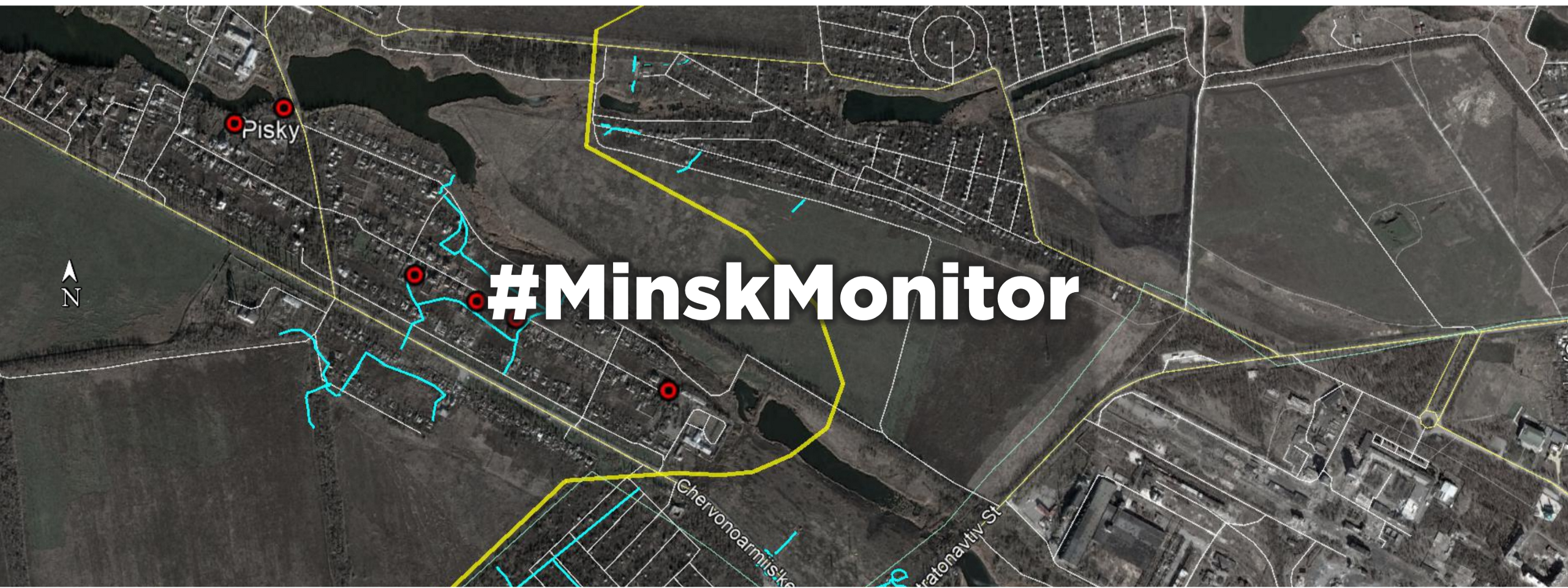#MinskMonitor: Pisky Under Fire
Drone video reveals separatist armor firing on the government-controlled village of Pisky
#MinskMonitor: Pisky Under Fire

Drone video reveals separatist armor firing on the government-controlled village of Pisky

On April 12, 2017, Ukrainian TV station TSN ran a story featuring drone footage of Russian-backed separatist armor firing on the government-controlled village of Pisky from an elevated position within separatist-held territory. Ukraine enjoyed a period of relative calm during the beginning of 2018, but with diminishing returns from the Easter ceasefire and the winter thaw coming to the Donbas, infringements to the Minsk agreements are on the increase.
@DFRLab geolocated the footage, and mapped it against known military positions in the conflict.
The video showed both footage from the ground in the village precariously located on the front-line, as well as footage from the sky recorded by a drone. Footage from the ground reveals the extent of the damage that years of war have inflicted on Pisky, with many buildings destroyed to the point of inhabitability. Footage from the sky, however, captured the destruction as it was occurring.
#Ukrainian drone spots Russian tank firing on village of Pisky. From Russian occupied #Donetsk, to get an elevated firing position, tank has driven up a large mine, slag heap. Pisky's been devastated by Russian artillery. Watch footage > https://t.co/iQmw63IvmJ #Donbas #Donbass pic.twitter.com/6cyWOQ6cZa
— Glasnost Gone (@GlasnostGone) April 15, 2018
Two primary areas of interest can be identified in the aerial footage: the village of Pisky, and the separatist tank firing onto the village from a slagheap to the southeast. This is the same area that was featured in a previous @DFRLab investigation into the use of a Ukrainain ATGM, located in between northwest Donetsk and Pisky.
From the news footage alone, it was tough to tell whether the impacts are from the tank in Russian-backed separatist territory or artillery impacts. Regardless, the magnitude of these impacts indicated that the munitions dropped were likely over the allotted size under the Minsk agreements. Twitter user @GlasnostGone was quick to identify the location from which the tank fired.

In the above illustration, we can see the tank’s firing location and direction in relation to Pisky, with visual indications that the tank was firing onto the village. @DFRLab maintains a database of known trench lines in the Donbas, and have marked them as bright blue in the above illustration. Trench lines to the right (east) of the yellow line are in separatist-held territory, while lines to the left (west) are government-controlled.

The tank in question appeared to be a T-64BV, evident by its mostly-straight explosive reactive armor (ERA) configuration on its turret, in combination with the left-mounted IR projector. While custom ERA configurations are common in the Donbas, Soviet-era tanks other than the T-64 (such as the T-72) have their IR projector mounted on the right side. There are other T-64 variants in the Donbas that could fit this description, but the BV is the most numerous variant, and therefore the most likely.
Regardless of the identity of the tank, all tanks in the Donbas use a 125mm cannon as their main armament. The Minsk agreements clearly detail that weapons with a caliber greater than 100mm should be withdrawn behind a 50km security zone along the contact line. The tank in the TSN footage was approximately 1.5km from the line of contact.

Mapping the shell impacts against known fortifications, a distinct pattern becomes apparent. Marked by red dots, impact points were distributed in a nearly straight line going north-west. Three impact points recorded in the news segment were located in the midst of a Ukrainian government trench system. Three other impact points were in locations in front of, and behind, this trench system, where no military targets were visible from satellite imagery.
On April 13, the OSCE Special Monitoring Mission (SMM) to Ukraine released imagery from April 6 showing two tanks parked in separatist-held Verkhnoshyrokivske near the front lines.
https://twitter.com/OSCE_SMM/status/984743054946062336
Breaches of the Minsk agreements of this kind are fairly common, and are well-documented by the OSCE SMM to Ukraine, but footage of direct engagements of the kind documented by TSN is somewhat rare.
Conclusion
While 2018 has been a comparatively calm year so far in the war in the Donbas, the fragile ceasefire that was put into effect during Easter is losing its effectiveness. The evidence of active employment of armor directly on the front-line is an obvious cause for concern, but unsurprising. For years, large-caliber weaponry has been employed in skirmishes in eastern Ukraine, and this is unlikely to let up any time soon.
@DFRLab will continue to monitor developments in the conflict in eastern Ukraine as part of our #MinskMonitor series.
Follow the latest Minsk II Violations via the @DFRLab’s #MinskMonitor.
For more in-depth analysis from our regional experts follow the AtlanticCouncil’s Dinu Patriciu Eurasia Center. Or subscribe to UkraineAlert.

